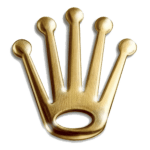Religious factors affected nationalism immensely during the First Crusade. It should be noted that Pope Urban II, Pope of the Catholic Church from A.D. 1088-A.D. 1099, utilized a combination of Bible doctrine and racial rhetoric to rally the Holy Roman Empire, namely the clergyman of the Catholic Church and the nobles of France and Germany to lend support and their best soldiers respectively to an invasion of Jerusalem, namely a crusade that would result in Jerusalem, the Holy Land, being claimed by the Franks.
The Council of Clermont, was a synod, (assembly) called by Urban II in November of 1095, that served as a papal rallying cry in which Urban II urged the audience, which consisted of bishops and princes from Germany and France, to claim Jerusalem for the “race of the Franks” namely for the “remission of sins.” At this time, all of Palestine and much of the near-east was controlled by the Seljuk Empire, an empire that was Sunni Muslim religiously, and Turko-Persian ethnically. The Pope during his speech at Clermont called the Turks a “despised and based race which worships demons” further stating that they should never have conquered a people (the European Byzantine Empire) that have the “faith of Omnipotent God, and is made glorious with the name of Christ!” Urban II further described the Turks as an “accursed and foreign race,” that did not have their hearts right with God. During his speech, Urban II highlighted the Turks’ fierceness in battle as well as their tendency to brutalize the Christians of Jerusalem, make slaves out of the Christians that they allowed to live, desecrate the Christian churches and altars, forcibly circumcise the Christian males, and perform sacrilegious rituals with the blood of the circumcisions.
Urban II further stated that “It is better to say nothing of their (the Turks) treatment of (Christian) women.” Urban II further elaborated that the Turks had wrested from Greece a tract of land so large that it takes “two months to travel through it.” Urban II quoted Matthew 10:37 during this speech to illustrate that this crusade should take precedence over the Crusaders’ families as this crusade was a holy endeavor that would be done in the name of Jesus Christ. Urban II told the congregation that it is their duty and responsibility to take Jerusalem for the French people. He said that the Lord gave the Franks a sense of military courage and a sense of chivalry that other nations lacked. It should be noted that while not expressly preached by Urban II at the Council of Clermont, the importance of laying siege to the “Church of the Holy Sepulchre,” a site believed by Christians to be the approximate location of the crucifixion of Jesus Christ and the approximate location of the tomb of Christ, was a major motivating factor in Pope Urban’s desire for an invasion of Jerusalem. Urban II evidently believed that in order to rally the Franks to undertake an endeavor of the magnitude of invading Jerusalem and defeating the fierce Turks in battle, that appealing to the Franks' sense of duty to God as well as to their sense of ethno-religious nationalism was essential.
This image is entitled: Pope Urban II preaching at the Council of Clermont in 1095. The artist is Jean Colombe c. 1474 (France).
https://i.pinimg.com/564x/fb/62/aa/fb62aa73e51c45299d69e8c070858530.jpg

In this journal you will find information, images and videos that belong to the EIS media Group / Bible Discourses LLC canon of original content. Content related to history, news, politics, world affairs, gang-stalking and more can be found on this Blogger page. www.facebook.com/emmanuelisaiahsmith123 www.instagram.com/soltronian https://www.tiktok.com/@emmanuelsmith2805 https://www.tiktok.com/@emmanuelisaiahsmith7
Subscribe to:
Post Comments (Atom)
Gangstalking's Points System
Mind you, my comments on gang-stalking is wholly based upon my personal experiences, the application of historical narratives and events, an...
-
This Linktree link will take you to a page that has links to most of my social media pages.
-
[gallery ids="607,606,610,608,611,609" type="rectangular"]
-
The United States Federal Government, besides the legislative incompetence it has shown in legalizing gangstalking, the national security...




